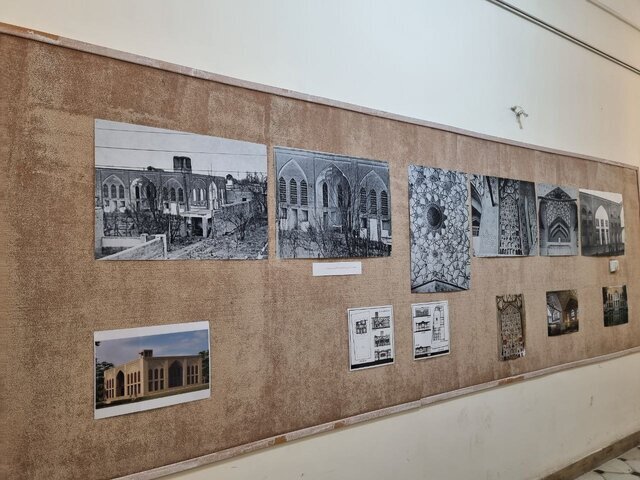Exhibit highlights efforts to revitalize Isfahan’s Jolfa

TEHRAN – A photo exhibition highlighting efforts to revitalize Isfahan’s [New] Jolfa is currently underway in the ancient Iranian city.
The opening ceremony was attended by Seyyed Mohammad Beheshti Shirazi, a member of the Supreme Council of Cultural Heritage and Tourism, along with several other heritage experts and travel insiders, ISNA reported.
Addressing the event, Beheshti Shirazi honored efforts by photographer Ahmad Montazer whose selection of works put on show at the eight-day event.
He then raised a question: why the work of photographers is valuable, and then answered: "Two things are clear to reason; seeing at the right time and not seeing at the right time; and that is what photographers do. They help us not to see what should not be seen and to see what should be seen….”
Referring to the exhibition named "Half a Century of Efforts to Revitalize Isfahan's Jolfa", Beheshti said: “This exhibition is a good warning for us to act smarter.”
“The [New] Jolfa neighborhood, with over 400 years of history, stands as one of the most significant historical and cultural centers in southern Isfahan. The quarter dates from the time of Shah Abbas I, who transported a colony of Christians from the town of Jolfa (now on Iran’s northern border) en masse, and named the village ‘New Jolfa’.
Shah Abbas sought their skills as merchants, entrepreneurs, and artists, and he ensured that their religious freedom was respected – albeit at a distance from the city’s Islamic center. At one time, over 42,000 Armenian Christians reportedly lived there.
Isfahan was once a crossroads of international trade and diplomacy in Iran, and now it is one of Iran’s top tourist destinations for good reasons. The ancient city is filled with many architectural wonders, such as unmatched Islamic buildings, bazaars, museums, Persian gardens, and tree-lined boulevards. It's a city for walking, getting lost in its mazing bazaars, dozing in beautiful gardens, and meeting people.
The city has long been nicknamed as Nesf-e-Jahan, which is translated into “half the world”, meaning seeing it is relevant to see half the world. In its heyday, it was also one of the largest cities in the region, with a population of nearly one million.
AM
